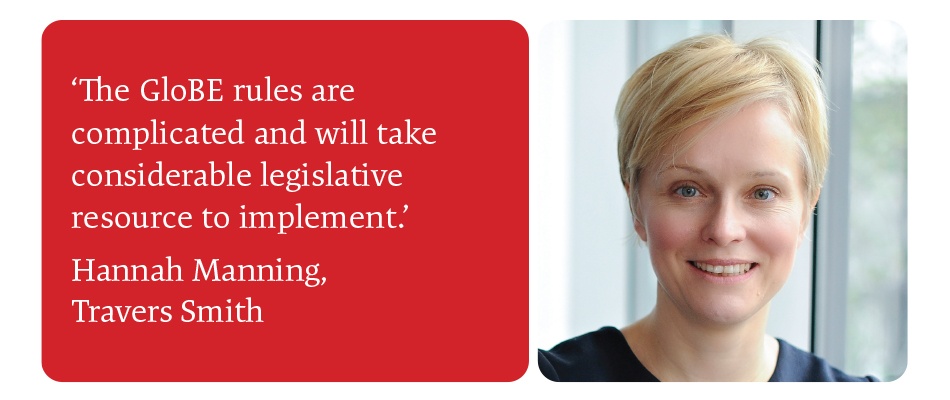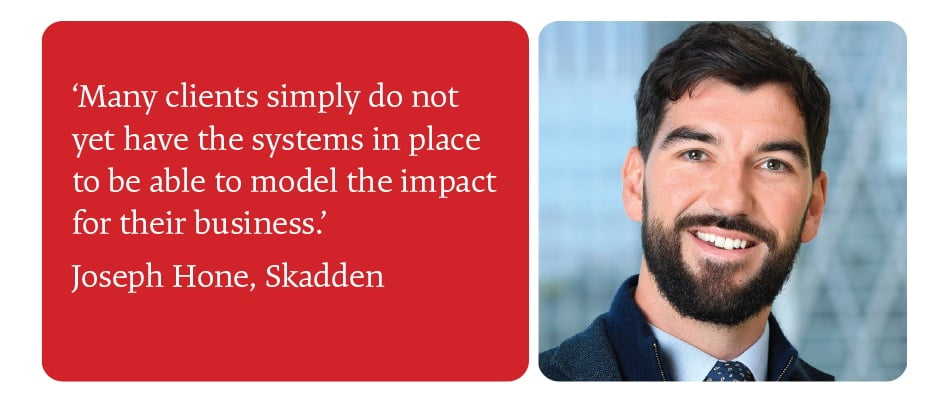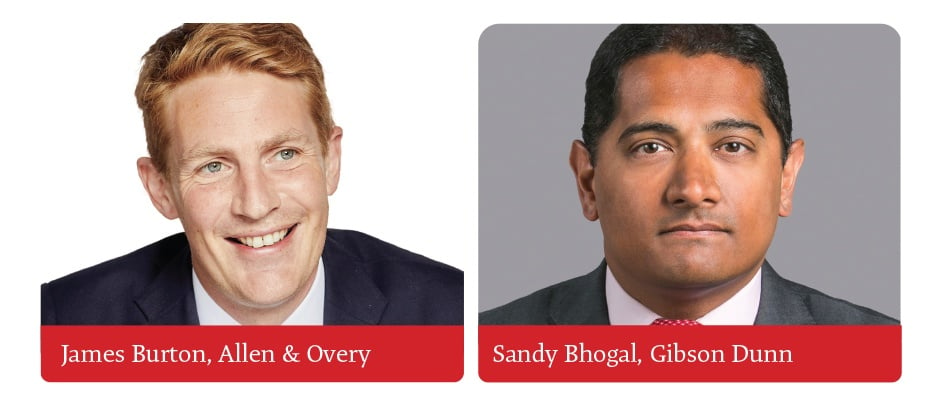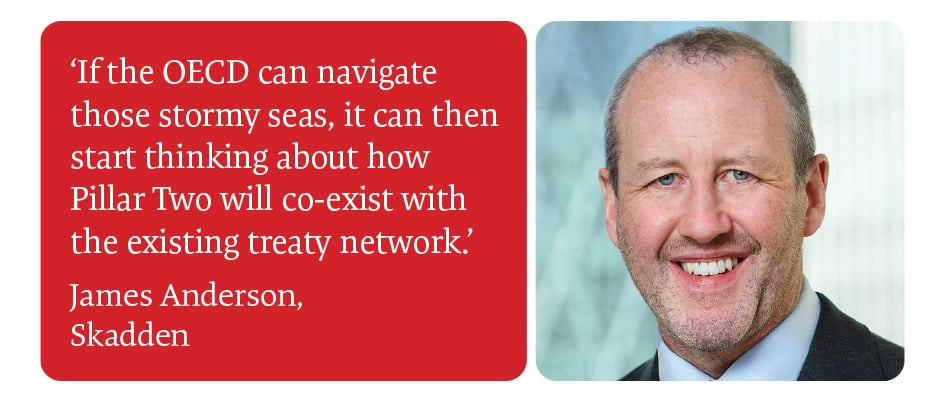After an extended and often troubled development, the OECD’s new ‘global minimum tax’ is at last coming to fruition. With adoptees including South Korea and Japan, and the Council of the European Union in addition to the UK government announcing plans to follow suit by the end of 2023, the prospect of Pillar Two, long seen as distant and perhaps uncertain, is now ever more tangible.
In brief, the aim of the new framework is to avoid a race-to-the bottom in international tax rates, closing residency loopholes in the tax system. This is to be achieved by ensuring that all jurisdictions implement a global minimum tax rate of 15% for corporations generating above €750m in revenue.
However, realising this ultimate goal requires a complex package of new rules, with far-reaching consequences likely to result in a considerable shift in the global system. For many of those affected by the updated rules, the potential scope of the change and slow rate of delivery, has made the new reality difficult to grapple with. With implementation now on the horizon, questions are being raised about what the changes may mean, and how businesses can be sure of being fully prepared.
The building blocks
‘Pillar Two originated as part of Action 1 of the OECD’s original Base Erosion and Profit Shifting (BEPS) project, which looked to address the tax challenges arising from the digitalisation of the economy,’ says Allen & Overy tax partner James Burton. ‘There was, and is, a concern that large multinationals were contriving to ensure that profits arise in low tax jurisdictions artificially, and that these issues were exacerbated by the new opportunities and freedoms conferred by a digital economy.’
‘There was a perception that tax competition between jurisdictions was no longer in those jurisdictions’ best interests,’ concurs Skadden European counsel Joseph Hone. ‘Something had to be done to arrest the declining rates and rise of special tax exemptions or regimes.’
Problems arose with the initial BEPS action plan, however, as existing taxation rules relied on businesses having a taxable presence or activity within the host country, which digital businesses without obvious physical taxing points effectively sidestepped.
The proposed solution to this was ‘the Two-Pillar Solution’, of which Pillar Two was envisioned as one part. Burton summarises the reforms as such: ‘Broadly, Pillar One of these two pillars reallocates a portion of taxing rights over the residual profits of large multinational enterprises (MNEs) in favour of market jurisdictions, whereas Pillar Two looks to impose a 15% effective minimum corporation tax rate on the profits of in-scope MNEs.’
These two pillars, working in conjunction, were intended to resolve taxation challenges posed by the modern, digital, globalised economy. By simultaneously eliminating low tax jurisdictions with Pillar Two, and authorising market jurisdictions to pursue profits made within their borders with Pillar One, it was hoped that governments would be significantly empowered to levy taxes on multinationals.
However, Pillar One has now stalled, due in part to a lack of interest by the United States, leaving Pillar Two to move alone into actualisation. Whether Pillar One, or something like it, will be revisited at a later date remains uncertain. As such, countries and businesses must now reckon with the implementation of one half of the originally conceived reforms.
‘Additional domestic CFC-type rules or amendments to a given jurisdiction’s treaty network might have offered an alternative solution, by penalising those jurisdictions that adopt excessively low rates,’ observes Hone. ‘But the multilateral nature of Pillar Two avoids some of the adverse political ramifications and potential trade disputes that might flow from specific bilateral actions between states.’
Pillar Two’s central objective of establishing a global 15% minimum corporate tax rate operates via a complex system of mechanisms, known as the Global Anti-Base Erosion (GloBE) rules, which Travers Smith tax partner Hannah Manning explains: ‘GloBE rules will impose top-up taxes where the effective rate of tax of an entity in a jurisdiction is below 15%. There will also be a subject to tax rule which will allow source taxation on certain cross-border related party payments that are subject to tax below a 9% minimum rate.’
Top-up taxes, by which participating jurisdictions are empowered to tax corporate revenue in countries with a tax rate below the minimum rate of 15%, are key to the operation of Pillar Two, and the reason why implementation is both appealing and difficult for jurisdictions.
‘The GloBE rules provide for two mechanisms to collect top-up tax,’ adds Manning. ‘The primary mechanism is the Income Inclusion Rule (IIR), which charges top-up tax to parent entities. The secondary mechanism is the Undertaxed Profits Rule (UTPR).’
‘The UTPR only comes into play if it has not been possible to recover all of the top-up tax under the IIR, for example, if the relevant parent entity was located in a jurisdiction that had not implemented an IIR, in which case the UTPR allocates the remaining top-up tax to group entities located in jurisdictions that have implemented an undertaxed profits rule where there are tangible assets and or employees.’
Jurisdictions achieve full compliance with Pillar Two by entering these rules into legislation. The IIR is the rule currently on the horizon, with South Korea, an early adopter, enacting it as of 31 December 2022, and the UK government announcing plans to follow suit as of 31 December 2023. Countries will then bring the UTPR into force at a later date. Those jurisdictions which fall behind in implementation, however, come at risk of seeing their multinational businesses taxed multiple times over by foreign administrations.
Known unknowns
The Pillar Two framework has now progressed to a critical point. Yet as the new measures transfer from theory to reality, the challenges faced in the rollout, as well as the potential issues caused by implementation, become manifest.
‘The biggest unknown is whether enough jurisdictions will implement Pillar Two for the proposals to have the intended effect,’ says Burton. ‘It is currently unlikely that the US will implement, as the attempt to use the Build Back Better Act to amend the US Global Intangible Low-Taxed Income (GILTI) rules to make them Pillar Two compliant was unsuccessful, and recently, US Republicans proposed “anti-UTPR” legislation.’
The stance of the US is a particular issue. The US already enforces taxes on the overseas income of its corporations under the GILTI rules. This creates problems both for governments, facing potential geopolitical disputes over taxation, and corporations, now at risk of seeing the same income taxed many times over.
Sandy Bhogal, who co-chairs Gibson Dunn’s global tax practice from London, expands on the topic. ‘The significant majority of the companies that are targeted by things like Pillar One and Pillar Two are US headquartered. There could be repercussions for countries trying to further tax those US companies within their borders – for example, the US has been previously warning countries who have introduced digital services taxes, saying to them that it’s a land grab against US companies and threatening forms of trade sanctions.’
Digital services taxes are another example of jurisdictions grappling with the new digital economy. The UK implemented its own 2% tax on search engines, social media services, and online marketplaces in 2020, following the example of other countries across Europe and beyond. The US has taken a line against the movement, with the Donald Trump administration at one point threatening tariffs on any countries which adopted digital services taxes.
Powerful nations like the US may oppose additional foreign taxation on their domestic corporations, but at the other end of the spectrum, less economically developed countries have issues of their own with implementation.
‘The GloBE rules are complicated and will take considerable legislative resource to implement,’ Manning explains. ‘Insufficient legislative resource in developing economies may mean that such jurisdictions do not get to retain the additional tax collected in relation to local activities, which could be seen as inequitable.’
‘A number of developing countries are quite upset about Pillar Two,’ Bhogal adds. ‘They’re going to incur costs on the infrastructure, and people to ensure they can monitor and comply with it, but they’re not going to collect much tax from it.’
That less politically and economically powerful countries – including those which may have historically relied upon low tax rates to encourage investment – are being left disadvantaged by the changes is a key concern. However, resource problems as a result of the new rules are not limited to smaller nations.
‘Tax authorities around the world do not have the necessary resources to properly enforce and collect,’ warns Bhogal.
‘A lot of the disputes that I think will arise will be based on the fact that it is a new regime which people will need to learn, and they won’t really have the people in place to ensure that it’s dealt with properly.’
‘From a practitioners’ perspective, Pillar Two has effectively introduced a new tax code for all in-scope groups,’ Hone observes. ‘Businesses, and their advisers, will now need to consider both the Model Rules as well as the more familiar domestic rules that they have dealt with in the past. The same is true for legislators: there may be little point introducing tax credits or reliefs if the intended tax benefit is not respected by the Pillar Two rules.’
Taxing questions
The question to be asked, though, is what this means for those steering businesses through newly uncertain waters. Pillar Two applies to multinational groups and their constituent entities that have annual gross revenues equal to or exceeding €750m, so it is the larger multinationals which will be affected. However, even for these large groups, adhering to the new rules may become a significant burden.
‘As well as the potential additional tax liability, many are concerned about the administrative and compliance burden that the rules entail,’ Burton observes. ‘While there are exclusions and reliefs, they are relatively limited, and in many cases still require groups to do the relevant computations.’
This is a key point of concern shared by Hone. ‘We are seeing that many clients simply do not yet have the systems in place to be able to model the impact for their business. Trying to correct those shortcomings should of course be the first priority of any in-scope group.’
‘When companies have finally figured out the detailed impact on their businesses, it is likely that certain structures will no longer make sense. We are already seeing clients – including those which pay very high rates of tax on their profits – being exposed to double taxation if the Model Rules are adopted in their current form. Trying to unwind the quirks of a corporate group that gives rise to such problems inevitably requires the participation of legal teams across many jurisdictions – and we can easily foresee a situation where there is an 11th hour rush for legal services.’
For businesses looking to prepare as implementation approaches, Manning suggests considering whether changes need to be made to their structure. ‘Is an investment in an entity which benefits from a particular low tax regime skewing results for a jurisdiction? Should this be disposed of? Or could an investment in an entity paying a higher rate of tax in the same jurisdiction smooth this out?’
‘Smaller groups cannot ignore Pillar Two,’ she continues. ‘Businesses making investments in an in-scope group or purchasing a target from an in-scope group will need to ensure that they have considered the impact of Pillar Two on their investment.’
‘The big flag that we have been waving to clients is that this isn’t just about jurisdictions with no, or low headline rates of corporation tax,’ says Hone. ‘The focus on the effective rate of tax in a jurisdiction – as calculated for Pillar Two, rather than domestic, purposes – means that many companies may be subject to top-up tax on profits arising in jurisdictions like the US. That becomes especially problematic following the implementation of the UTPR, at which point subsidiaries of a US-headed group may start levying top-up tax in respect of the US parent’s profits.’
Gibson Dunn’s Bhogal is already seeing a broad range of work arising from Pillar Two. ‘Helping people with their legal structures, helping people with their tax models, helping people prepare themselves for the compliance aspect, and even, in some circumstances, helping people with preparing for the inevitable disputes that will follow.’
Burton also anticipates a rise in tax disputes. ‘Once multinationals adjust to the new normal and have the relevant systems in place, the compliance aspects should become less of an issue. The market may well agree accepted positions in relation to risk allocation. However, the likelihood of multinational disputes remains, as groups grapple with uncoordinated or inconsistent application of the rules, potentially resulting in multiple layers of double taxation.’
Sticking plaster solution?
Ultimately, it is impossible to say with certainty what the advent of Pillar Two will bring. The full consequences of implementation remain to be seen – as do the effects of the uneven global rollout, and the final form that the rules will even take.
‘We don’t see this sounding the death knell for tax neutral jurisdictions’, says Hone. ‘There will still be a role for groups whose revenue falls below the €750m threshold, pure holding companies or investment funds falling within the Pillar Two exclusion.’
With nations worldwide pushing for implementation, it seems likely that the critical mass necessary will be achieved. There even remains a possibility in the US, where the Biden administration retains interest in implementation, despite strong political opposition. Only time will tell if international sentiment changes for the better or the worse as theory becomes reality.
Skadden European tax head James Anderson asserts: ‘If the OECD can navigate those stormy seas, it can then start thinking about how Pillar Two will co-exist with the existing treaty network, as well as defending its central role in international tax policy in light of the General Assembly Resolution on “Promotion of inclusive and effective tax cooperation” at the United Nations.’
The new UN resolution, which reaffirms a commitment to scale up international tax co-operation, casts the UN as a potential functional competitor to the OECD in the international tax policy space, and underlines the internal need for results from the Pillar Two policy.
If there is a key argument to make in favour of Pillar Two, it is what it represents ideologically. ‘The OECD hoped that the Two Pillar solution would happen quickly, because I think they recognise that it is a stepping stone to bigger things,’ says Bhogal.
‘It’s a sticking plaster solution. The proper solution – the real wholescale evolution that you need of the international tax system – that’s still to come.’




